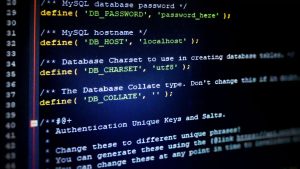The Role of Temporary Emails in BSD System Administration
Email alerts are a critical component of managing BSD systems, providing administrators with real-time updates on system errors, resource usage, and potential vulnerabilities. These alerts enable swift action to address issues and maintain system stability. In certain scenarios, temporary mail services offer unique advantages, particularly for testing and troubleshooting purposes.
Using a temporary mail account streamlines operations by eliminating lengthy registration processes, allowing administrators to focus on system testing and monitoring without delays. These accounts are especially useful for testing new server configurations, evaluating alert mechanisms, or isolating specific logs. However, while they offer convenience, security concerns loom large—temporary emails can expose sensitive system information if not managed securely.
This article delves into the critical role of temporary emails in BSD system administration, exploring how to secure them effectively, configure BSD systems for alerts, and strike the right balance between convenience and security. By following the insights provided, administrators can ensure that temporary email usage enhances rather than compromises their system workflows.
Why Use Temporary Email Accounts for BSD System Alerts?
Temporary email accounts serve specific roles in BSD system management. Unlike permanent email accounts, disposable emails are designed for short-term use, making them ideal for situations that do not require prolonged access or storage. Their advantages and potential risks must be understood to leverage them effectively.
Benefits of Temporary Emails
The primary advantage of temporary email accounts is their quick setup process, which eliminates the need for registration. This is particularly useful when testing server configurations or sending trial alerts from BSD systems. Additionally, temporary emails can help administrators isolate specific notifications, avoiding the cluttering of permanent inboxes. This is especially helpful in early-stage development or debugging, where alerts may need constant adjustment.
Temporary email accounts also reduce the risk of spam, ensuring that a permanent inbox remains free from unnecessary messages. For tasks like testing system-generated emails or monitoring specific logs, disposable emails can be an efficient solution.
Scenarios for Temporary Email Use
Temporary emails shine in testing environments. For example, when evaluating new alert mechanisms in a BSD server, disposable emails allow administrators to verify functionality without risking exposure to personal or work-related accounts. Additionally, temporary accounts are effective for short-term monitoring projects where long-term accessibility is unnecessary.
Risks of Temporary Emails
While convenient, temporary email accounts come with risks. Many disposable email services lack encryption, making them vulnerable to unauthorized access. Their public nature can also expose sensitive information if system alerts are sent without adequate security measures. Finally, the limited lifespan of temporary emails may result in missed notifications if not managed carefully.
Choosing a Reliable Temporary Email Service
The effectiveness of temporary email accounts depends largely on the provider chosen. Administrators should evaluate services based on their security, functionality, and ease of integration with BSD systems.
Factors to Consider
Key considerations when selecting a temporary email service include security features, such as encryption and privacy policies. Retention period is another important factor, as some services delete messages after a short time, which may not align with the needs of the project. For BSD users, integration with mail tools and support for protocols like IMAP, POP, or SMTP can streamline the configuration process.
Recommended Temporary Email Services
Popular temporary email services include:
- Temp Mail: Offers quick setup and basic security but lacks encryption for sensitive tasks.
- Guerrilla Mail: Provides extended retention periods and customizable inbox names.
- 10 Minute Mail: Designed for short-term use with automatic deletion after ten minutes.
- Mailinator: Supports public inboxes, making it suitable for testing but less secure for private tasks.
Each of these services has its strengths and limitations. Administrators should select one that aligns with their project requirements, prioritizing security and reliability.
Configuring BSD for Email Notifications
BSD systems rely on robust mail-sending tools to deliver alerts. Configuring these tools with temporary email accounts involves several steps to ensure proper integration and functionality.
Overview of BSD Email Tools
Common BSD email tools include:
- Sendmail: A versatile but complex tool for sending system emails.
- Postfix: Known for its security and efficiency, often used as a Sendmail alternative.
- ssmtp: A lightweight option ideal for simple email-sending tasks.
Step-by-Step Guide to Configuring sSMTP
Install sSMTP: Use the BSD package manager to install the tool:
shell
CopyEdit
pkg_add ssmtp
- Edit the Configuration File: Open /usr/local/etc/ssmtp/ssmtp.conf and input SMTP server settings provided by the temporary email service:
makefile
CopyEdit
mailhub=smtp.temp-email-service.com:587
AuthUser=your_temp_email
AuthPass=your_password
UseTLS=YES
- Test Email Delivery: Use the mail command to verify functionality:
shell
CopyEdit
echo “Test email” | mail -s “Test Subject” recipient@example.com - Automate Alerts with Cron Jobs: Schedule email alerts using crontab:
shell
CopyEdit
*/30 * * * * echo “System Check” | mail -s “Alert” recipient@example.com
Troubleshooting Common Issues
If emails fail to send, check for incorrect SMTP settings, blocked ports, or authentication errors. Debugging logs can be found in /var/log/maillog.
Securing Temporary Email Accounts for BSD Alerts
Temporary email accounts, while practical, introduce unique security challenges. Administrators must take proactive measures to mitigate risks associated with their use.
Security Risks
Temporary emails are often public and lack encryption, exposing system alerts to unauthorized access. Additionally, phishing risks are heightened when using disposable addresses for administrative tasks.
Best Practices
To enhance security, administrators should:
- Encrypt Sensitive Data: Use encryption tools to secure email content.
- Avoid Sensitive Information: Limit email content to non-critical alerts.
- Implement Forwarding: Forward alerts to a secure inbox for better accessibility.
- Preserve Logs: Retain local copies of alerts for auditing and troubleshooting.
Automating System Alerts Using Disposable Emails
Automation is key to effective system monitoring. BSD provides several tools for integrating disposable emails into automated alert workflows.
Automating Monitoring Tools
Popular BSD monitoring tools like monit, logwatch, and syslog-ng can be configured to send alerts to temporary emails. For example, monit can notify administrators of system resource issues, while logwatch summarizes log activity.
Sample Cron Job
A simple cron job can automate alert emails:
shell
CopyEdit
*/10 * * * * logwatch | mail -s “Log Summary” temp-email@example.com
Integration Scripts
Custom scripts can further enhance automation. For instance, a shell script can parse logs and send filtered alerts to a disposable inbox:
shell
CopyEdit
#!/bin/sh
grep “ERROR” /var/log/syslog | mail -s “Error Alerts” temp-email@example.com
When to Use Disposable vs. Permanent Email Accounts
Temporary and permanent email accounts serve distinct purposes. Understanding their differences helps administrators choose the right option for each scenario.
Use Cases
Temporary emails are ideal for testing and short-term projects, while permanent accounts are better suited for production environments where reliability and long-term access are critical.
Transitioning to Permanent Alerts
When moving to production, ensure that permanent accounts are configured with secure protocols and encryption. Retain logs from temporary emails for reference during the transition.
The Future of Securing Temporary Email Accounts
The landscape of system alerts and temporary email services continues to evolve. Innovations in disposable email security and the integration of AI-driven monitoring tools are shaping the future of BSD system administration. Administrators should stay informed about emerging trends to maximize efficiency and security.










No Responses